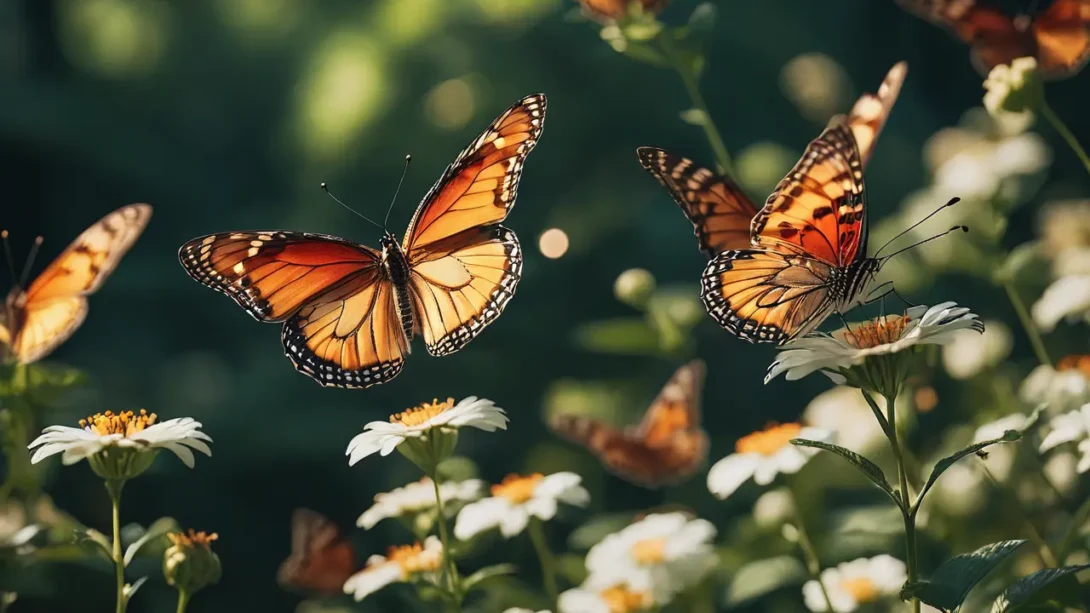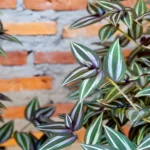Butterflies, with their vividly colored wings and graceful flight, are among the most enchanting visitors to any garden. The colors that attract these beautiful insects are not just a matter of chance but are deeply rooted in their biology and the ecological relationships they have with their environment. Understanding the specific colors that draw butterflies can significantly enhance the effectiveness of garden designs intended to attract them. This article delves into the fascinating world of butterfly attraction to colors, shedding light on how gardeners can create spaces that are not only visually stunning but also butterfly-friendly.
Butterfly Vision
To comprehend why certain colors are more attractive to butterflies than others, it’s essential to understand how these insects perceive the world. Unlike humans, butterflies have the ability to see ultraviolet (UV) light, which opens up a spectrum of colors beyond human vision. This ability plays a crucial role in their search for food and mates, as many flowers exhibit UV patterns specifically designed to lure pollinators. This section of the article will explore the mechanisms of butterfly vision and how it differs from human perception, providing a basis for understanding the role of color in attracting butterflies.
Butterfly vision is adapted to detect a wide range of colors, including those in the UV spectrum. Their eyes are composed of thousands of tiny lenses, allowing them to perceive colors and patterns in a mosaic-like view. This unique vision enables them to discern the subtle differences between flowers and foliage, guiding them to their preferred nectar sources and potential mates.
The Role of Color in Butterfly Behavior
Color plays a pivotal role in butterfly behavior, influencing everything from feeding to mating. Flowers and plants have evolved to take advantage of this by developing colors and patterns that are particularly appealing to butterflies. These colors not only signal the presence of nectar but also provide important visual cues for butterflies seeking mates. Additionally, the UV patterns found on many flowers are invisible to humans but are a beacon for butterflies, guiding them to valuable food sources.
The attraction to certain colors can be attributed to the way these colors contrast with the green background of foliage, making them stand out in the butterfly’s vision. Bright colors like red, yellow, orange, pink, and purple are particularly effective at catching a butterfly’s eye. Each of these colors, often associated with flowers rich in nectar, plays a specific role in the garden ecosystem, attracting different species of butterflies.
Colors That Attract Butterflies
Diving into the palette that nature offers, certain colors stand out as particularly attractive to butterflies. These include:
- Red: Often associated with vitality and vigor, red flowers can be a magnet for butterflies. However, it’s worth noting that red alone may not always be the most effective color unless it’s combined with other features, such as scent or nectar-rich attributes.
- Yellow: This bright, sunny color is highly visible to butterflies. Yellow flowers tend to stand out against the green backdrop of a garden, acting as beacons for these insects.
- Orange: Similar to yellow, orange flowers are easily spotted by butterflies. Their warm tones are inviting and indicate a rich source of nectar.
- Pink: Soft pink hues are not only attractive to the human eye but also to butterflies. Pink flowers often have deep nectar reserves, making them popular pit stops for these pollinators.
- Purple: Perhaps one of the most butterfly-friendly colors, purple flowers are highly effective at attracting a wide range of butterfly species. The color’s visibility and association with nectar-rich flowers make it a top choice for butterfly gardens.
Incorporating plants and flowers that exhibit these colors can significantly increase the likelihood of attracting butterflies. Some examples include lavender and purple coneflowers for purple, marigolds for orange, zinnias for a range of bright colors, and black-eyed Susans for a splash of yellow.
Designing a Butterfly-Friendly Garden
Creating a garden that attracts butterflies goes beyond simply planting flowers of certain colors. Here are some tips for designing a butterfly-friendly space:
- Variety is Key: A diverse selection of plants will attract more butterfly species. Include a mix of colors, shapes, and sizes to cater to different preferences and needs.
- Group Similar Colors Together: Planting blocks of the same color can create a more significant visual impact, drawing butterflies from a distance.
- Consider Bloom Times: To provide a consistent food source for butterflies, choose plants that bloom at different times throughout the growing season.
By thoughtfully selecting and arranging plants, gardeners can create a haven for butterflies that is both beautiful and beneficial to the local ecosystem.
Beyond Color: Other Factors That Attract Butterflies
While color plays a significant role in attracting butterflies, other factors are also at play. The scent of flowers, the shape of blooms, and the availability of nectar and pollen are critical in drawing butterflies to a garden. Additionally, providing a habitat that meets the needs of butterflies, including areas for sunbathing, shelter from the wind, and sources of water, can make a garden even more inviting.
Case Studies: Successful Butterfly Gardens
Exploring successful butterfly gardens provides valuable insights into practical strategies and plant selections that effectively attract butterflies. These case studies highlight the importance of diversity, thoughtful garden design, and the integration of butterfly-friendly practices.
One notable example is the butterfly garden at a renowned botanical garden, which features a wide variety of nectar-rich plants in the colors butterflies love most: red, yellow, orange, pink, and purple. Key to its success is the garden’s layout, which includes large swaths of single colors to create an impactful visual lure for butterflies from afar. The garden also incorporates plants with different bloom times, ensuring a continuous supply of nectar throughout the seasons.
Another example comes from a community garden designed with input from local lepidopterists. This garden focuses on native plant species, which are particularly beneficial for local butterfly populations. The inclusion of milkweed is specifically noteworthy, as it provides a habitat for monarch butterflies to lay their eggs, in addition to offering nectar for adult butterflies.
Gardeners managing these spaces often share a few common tips:
- Regularly add compost to enrich the soil, ensuring plants are healthy and more capable of producing abundant nectar.
- Avoid the use of pesticides, which can harm butterflies and other beneficial pollinators.
- Include flat stones in sunny spots for butterflies to bask on and shallow water sources for them to drink from.
Conclusion
The journey to creating a butterfly-friendly garden is both an art and a science, blending aesthetic considerations with an understanding of the ecological needs of butterflies. The colors that attract butterflies—red, yellow, orange, pink, and purple—are just the starting point. By designing gardens that cater to the full lifecycle of butterflies, including providing food plants for caterpillars and nectar sources for adults, gardeners can contribute significantly to the conservation of these important pollinators.
Furthermore, the case studies and insights from experienced gardeners underscore the importance of diversity, native plantings, and pesticide-free practices in attracting butterflies. As we’ve seen, successful butterfly gardens not only bring joy and beauty to human observers but also play a crucial role in supporting local ecosystems.
In embracing the strategies outlined in this article, gardeners can transform their outdoor spaces into thriving sanctuaries for butterflies, enhancing biodiversity and fostering a deeper connection with the natural world. The role gardeners play in supporting butterfly populations is invaluable, and through thoughtful garden design and plant selection, we can all contribute to the preservation and flourishing of these beautiful insects.



